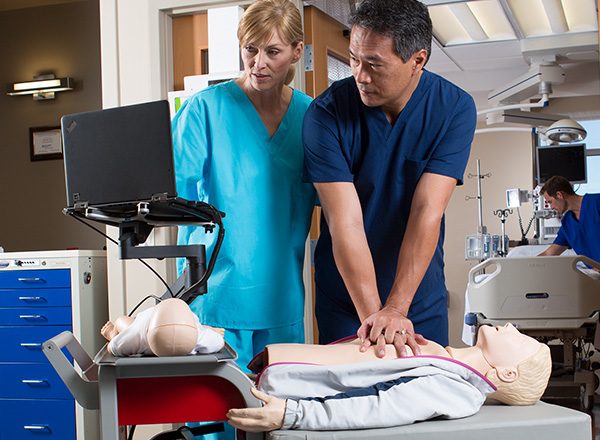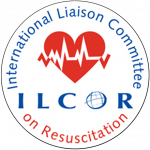Providing high-quality CPR is the single greatest determinant for survival from cardiac arrest. Despite advances in resuscitation science and equipment, current cardiac arrest survival rates remain sub-optimal for both in-hospital and out-of-hospital settings.1
Health care workers can lose essential CPR skills when too much time passes between each CPR training. The American Heart Association (AHA) encourages science-backed educational strategies to improve CPR outcomes through proven methods that ensure skill retention.3 Compliance with these AHA guidelines is the new standard for CPR care and is associated with improved survival outcomes from cardiac arrest.
Core Components Define High-Quality CPR
The AHA has identified five essential aspects of delivering high-quality CPR to adults:
- Chest compression fraction of greater than 80%, to minimize interruptions of chest compressions and maximize coronary profusion
- Chest compression rate of 100-120 per minute
- Chest compression depth of 2 inches to 2.4 inches
- Allow for full recoil of the compressed chest
- Avoid excessive ventilation
Health care facilities and teams can improve their survival rates by developing competency in each component and reinforcing optimal teamwork during cardiac arrest.
Maximizing CPR Learning Outcomes
The current schedule of 1 to 2 days of resuscitation training every couple of years is effective for short-term learning. However, learners often do not retain these skills in the long term. Shorter learning sessions every few months may improve learning outcomes.3
Research suggests CPR skills can diminish as soon as three months after training and that the conventional two-year cycle for basic life support training is inadequate for mastering the CPR skills needed to improve patient cardiac arrest outcomes.4
A key component of high-quality CPR education is using a low-dose, high-frequency training model, but improving CPR outcomes will depend on all educational strategies.3 Verified competence is the only standard of care that can improve survival rates for cardiac arrest patients.
RQI Makes Resuscitation Education More Effective
Resuscitation Quality Improvement (RQI) is a CPR performance improvement program developed by the AHA and Laerdal Medical. With quarterly assessments, the RQI Program delivers CPR knowledge and skill training more frequently, so clinicians don't lose their life-saving CPR skills.
Shorter, more efficient and more frequent CPR training models can enhance clinicians' life-saving skills and keep them sharp. The RQI Program improves clinician competency, confidence and patient outcomes by helping save more lives.5 Other benefits include:
- Providing more compact and more frequent training
- Setting a minimum passing standard for learners to demonstrate mastery
- Measuring skill competency with feedback presented to the learner
- Offering real-time feedback to improve difficult-to-master skills
- Increasing learning opportunities with simulation stations located near the point of care
- Tailoring sessions to each clinician's real-world scope of practice
High-Quality CPR Education Elevates Patient Care
With traditional biennial training methods, providers practice once every two years without objective feedback, resulting in skills decay. Many traditional training models don't have a way of measuring learners' performance, so they don't know what they need to work on. The RQI Program addresses these concerns by providing data and analytics on learner performance in a mastery learning model that continually verifies CPR competence for the five components of high-quality CPR.6
Having sub-optimal CPR skills is easily preventable. The RQI Program can help organizations deliver the new standard of CPR care more effectively than traditional programs and help clinicians save more patient lives.
Sources
- Meaney, Peter A. et al. Cardiopulmonary Resuscitation Quality: Improving Cardiac Resuscitation Outcomes Both Inside and Outside the Hospital. Circulation. Published July 23, 2013. Accessed September 13, 2023.
- 2020 American Heart Association Guidelines for CPR and ECC. Updated 2023. Accessed September 13, 2023.
- Cheng, Adam et al. Resuscitation Education Science: Educational Strategies to Improve Outcomes From Cardiac Arrest. Circulation. Published June 21, 2018. Accessed September 13, 2023.
- Anderson, Robert et al. Optimal training frequency for acquisition and retention of high-quality CPR skills: A randomized trial. Resuscitation. Published November 01, 2018. Accessed September 13, 2023.
- Patient Outcomes. RQI Partners. Updated 2023. Accessed September 13, 2023.
- Why RQI? RQI Partners. Updated 2023. Accessed September 13, 2023.








